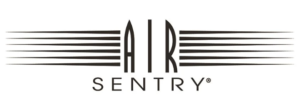
This webshop, based in the Netherlands, aims at providing you tools, products and systems to be able to analyze your diesel quality and then bring and keep it in excellent condition.
If there are any products you are missing, please send us an email and we will look into expanding our product offering.
Cimtek Filters
-
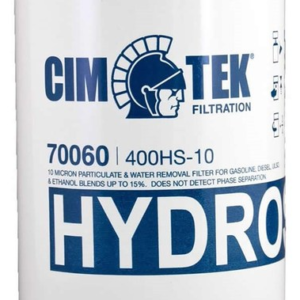 Toevoegen aan winkelwagenQuick View
Toevoegen aan winkelwagenQuick ViewCim-Tek 400 water block element 10μ CT70060
€27,45 €33,21 tax incl.Cim-tek filters are an economical and effective way to remove emulsified water, particulate and micro-organism from fuel and oil. Free water is best removed using a water separator – preferably before the fuel pump, as the water does make the Cim-teks block. we recommend Separ or Racor water separators. Cim-tek elements either only take out particulate or both particulate and emulsified water. They are available with nominal cellulose filter elements as well as the much more effective absolute glass fibre based filter elements, and then with or without absorption material to eliminate the emulsified water from the fuel or oil. The latter prevents the growth of micro-organism. Different element and filter head sizes are for different pump flow rate rates. The lower the micronnage on the filter, the better it filters and removes water.
Toevoegen aan winkelwagenQuick View -
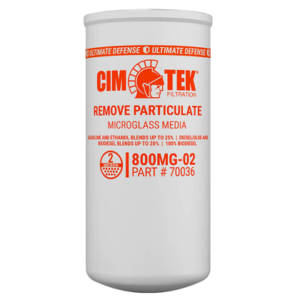 Toevoegen aan winkelwagenQuick View
Toevoegen aan winkelwagenQuick ViewCim-Tek 800 absolute particulate element 2 μ CT70036
€76,33 €92,36 tax incl.Cim-tek filters are an economical and effective way to remove emulsified water, particulate and micro-organism from fuel and oil. Free water is best removed using a water separator – preferably before the fuel pump, as the water does make the Cim-teks block. we recommend Separ or Racor water separators. Cim-tek elements either only take out particulate or both particulate and emulsified water. They are available with nominal cellulose filter elements as well as the much more effective absolute glass fibre based filter elements, and then with or without absorption material to eliminate the emulsified water from the fuel or oil. The latter prevents the growth of micro-organism. Different element and filter head sizes are for different pump flow rate rates. The lower the micronnage on the filter, the better it filters and removes water.
Toevoegen aan winkelwagenQuick View -
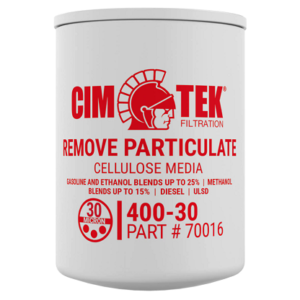 Toevoegen aan winkelwagenQuick View
Toevoegen aan winkelwagenQuick ViewCim-Tek 400 particulate element 30μ CT70016
€24,50 €29,65 tax incl.Cim-tek filters are an economical and effective way to remove emulsified water, particulate and micro-organism from fuel and oil. Free water is best removed using a water separator – preferably before the fuel pump, as the water does make the Cim-teks block. we recommend Separ or Racor water separators. Cim-tek elements either only take out particulate or both particulate and emulsified water. They are available with nominal cellulose filter elements as well as the much more effective absolute glass fibre based filter elements, and then with or without absorption material to eliminate the emulsified water from the fuel or oil. The latter prevents the growth of micro-organism. Different element and filter head sizes are for different pump flow rate rates. The lower the micronnage on the filter, the better it filters and removes water.
Toevoegen aan winkelwagenQuick View -
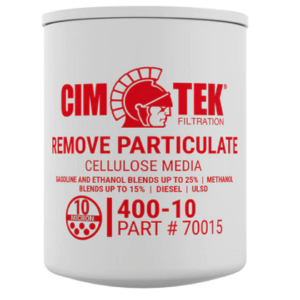 Toevoegen aan winkelwagenQuick View
Toevoegen aan winkelwagenQuick ViewCim-Tek 400 particulate element 10μ CT70015
€24,81 €30,02 tax incl.Cim-tek filters are an economical and effective way to remove emulsified water, particulate and micro-organism from fuel and oil. Free water is best removed using a water separator – preferably before the fuel pump, as the water does make the Cim-teks block. we recommend Separ or Racor water separators. Cim-tek elements either only take out particulate or both particulate and emulsified water. They are available with nominal cellulose filter elements as well as the much more effective absolute glass fibre based filter elements, and then with or without absorption material to eliminate the emulsified water from the fuel or oil. The latter prevents the growth of micro-organism. Different element and filter head sizes are for different pump flow rate rates. The lower the micronnage on the filter, the better it filters and removes water.
Toevoegen aan winkelwagenQuick View
Diesel Polishers
-
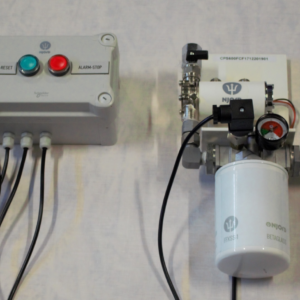 Toevoegen aan winkelwagenQuick View
Toevoegen aan winkelwagenQuick ViewNjord CPS-600-CF Fuel Polishing System
€991,30 €1.199,47 tax incl.Absolute Convertible Njord CPS-600-CF Fuel Polishing System 600 lph (180 gph) with:
– Can be placed just before the engine generating 50x cleaner fuel, reducing soot and fuel consumption
– With 2 micron absolute water-block filter OR 1 micron particulate filter
– OPTIONAL: – Njord NFC-500-1 optimized Fuel Conditioner
– Simple automation with On-Filter Alarm-Retset-Off switches and lightsToevoegen aan winkelwagenQuick View -
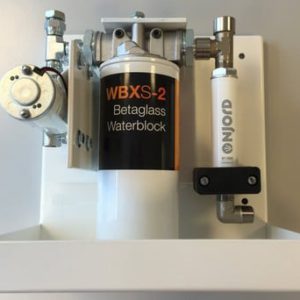 Toevoegen aan winkelwagenQuick View
Toevoegen aan winkelwagenQuick ViewNjord CPS-600-F Fuel Polishing System
€1.106,25 €1.338,56 tax incl.Absolute Convertible Polishing System 600 lph (180 gph) with:
– Secondary absolute water-block filter
– Njord NFS-500A Fuel Conditioner
– Manual on-off switch
– No without automation (upgradable)Toevoegen aan winkelwagenQuick View -
 Toevoegen aan winkelwagenQuick View
Toevoegen aan winkelwagenQuick ViewNjord CPS-900-F Fuel Polishing System1180
€1.298,28 €1.570,92 tax incl.Absolute Convertible Polishing System 900 lph (240 gph) with:
– Secondary absolute water-block filter
– Njord NFS-500A Fuel Conditioner
– Manual on-off switch
– No without automation (upgradable)Toevoegen aan winkelwagenQuick View
Njord Fuel Conditioners
-
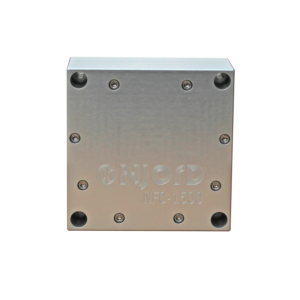 Toevoegen aan winkelwagenQuick View
Toevoegen aan winkelwagenQuick ViewNjord Fuel Conditioner NFC-1500-2
€1.162,08 €1.406,12 tax incl.This improved DUAL Njord Magnetic Fuel Conditioner with 2 magnets inside doubles its effect on fuel each run through and drastically reduce particle size in in diesel fuel, lube and hydraulic oils and other light distillates. Smaller particles mean less deposits on injectors, pumps, valves and tanks plus a better combustion as large particles cause incomplete combustion and formation of soot. Smaller particles also reduce the number of filter changes, and let you go down in micronnage of your filters. Because the injecots stay cleaner, the injeciton pattern is better and the consumption lower.
Next to that they stop microbial growth that can lead to the build-up of cellular product (jelly-like slime) produced by the organisms which block filters. Njord Fuel Conditioners provide the magnetic conditioning chamber which causes induction to occur in microbes suspended in the fuel and passing through the flow path of the Njord Fuel Conditioners. This action disrupts the electrical balance of the cell membrane, preventing it from colonizing and producing the corrosive acids and the cellular slime that coats tanks and blocks fuel filters. In this fashion they control microbial contamination.
Toevoegen aan winkelwagenQuick View -
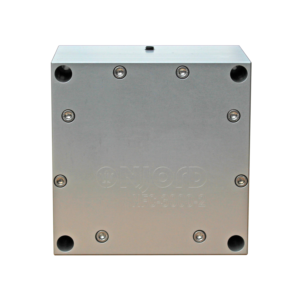 Toevoegen aan winkelwagenQuick View
Toevoegen aan winkelwagenQuick ViewNjord Fuel Conditioner NFC-3000-2
€2.325,61 €2.813,99 tax incl.This improved DUAL Njord Magnetic Fuel Conditioner with 2 magnets inside doubles its effect on fuel each run through and drastically reduce particle size in in diesel fuel, lube and hydraulic oils and other light distillates. Smaller particles mean less deposits on injectors, pumps, valves and tanks plus a better combustion as large particles cause incomplete combustion and formation of soot. Smaller particles also reduce the number of filter changes, and let you go down in micronnage of your filters. Because the injecots stay cleaner, the injeciton pattern is better and the consumption lower.
Next to that they stop microbial growth that can lead to the build-up of cellular product (jelly-like slime) produced by the organisms which block filters. Njord Fuel Conditioners provide the magnetic conditioning chamber which causes induction to occur in microbes suspended in the fuel and passing through the flow path of the Njord Fuel Conditioners. This action disrupts the electrical balance of the cell membrane, preventing it from colonizing and producing the corrosive acids and the cellular slime that coats tanks and blocks fuel filters. In this fashion they control microbial contamination.
Toevoegen aan winkelwagenQuick View -
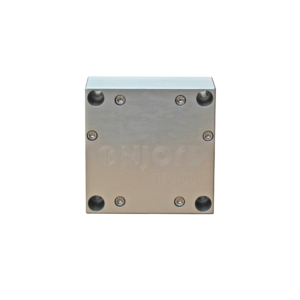 Toevoegen aan winkelwagenQuick View
Toevoegen aan winkelwagenQuick ViewNjord Fuel Conditioner NFC-500-2
€696,67 €842,97 tax incl.This improved DUAL Njord Magnetic Fuel Conditioner with 2 magnets inside doubles its effect on fuel each run through and drastically reduce particle size in in diesel fuel, lube and hydraulic oils and other light distillates. Smaller particles mean less deposits on injectors, pumps, valves and tanks plus a better combustion as large particles cause incomplete combustion and formation of soot. Smaller particles also reduce the number of filter changes, and let you go down in micronnage of your filters. Because the injecots stay cleaner, the injeciton pattern is better and the consumption lower.
Next to that they stop microbial growth that can lead to the build-up of cellular product (jelly-like slime) produced by the organisms which block filters. Njord Fuel Conditioners provide the magnetic conditioning chamber which causes induction to occur in microbes suspended in the fuel and passing through the flow path of the Njord Fuel Conditioners. This action disrupts the electrical balance of the cell membrane, preventing it from colonizing and producing the corrosive acids and the cellular slime that coats tanks and blocks fuel filters. In this fashion they control microbial contamination.
Toevoegen aan winkelwagenQuick View -
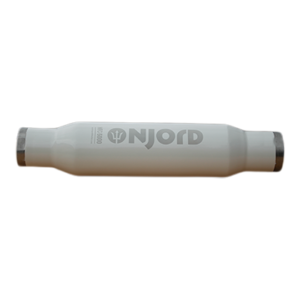 Toevoegen aan winkelwagenQuick View
Toevoegen aan winkelwagenQuick ViewNjord Fuel Conditioner NFC-5000
€4.447,98 €5.382,06 tax incl.Njord Magnetic Fuel Conditioners drastically reduce particle size in in diesel fuel, lube and hydraulic oils and other light distillates. Smaller particles mean less deposits on injectors, pumps, valves and tanks plus a better combustion as large particles cause incomplete combustion and formation of soot. Smaller particles also reduce the number of filter changes, and let you go down in micronnage of your filters. Because the injecots stay cleaner, the injeciton pattern is better and the consumption lower.
Next to that they stop microbial growth that can lead to the build-up of cellular product (jelly-like slime) produced by the organisms which block filters. Njord Fuel Conditioners provide the magnetic conditioning chamber which causes induction to occur in microbes suspended in the fuel and passing through the flow path of the Njord Fuel Conditioners. This action disrupts the electrical balance of the cell membrane, preventing it from colonizing and producing the corrosive acids and the cellular slime that coats tanks and blocks fuel filters. In this fashion they control microbial contamination.
Toevoegen aan winkelwagenQuick View



